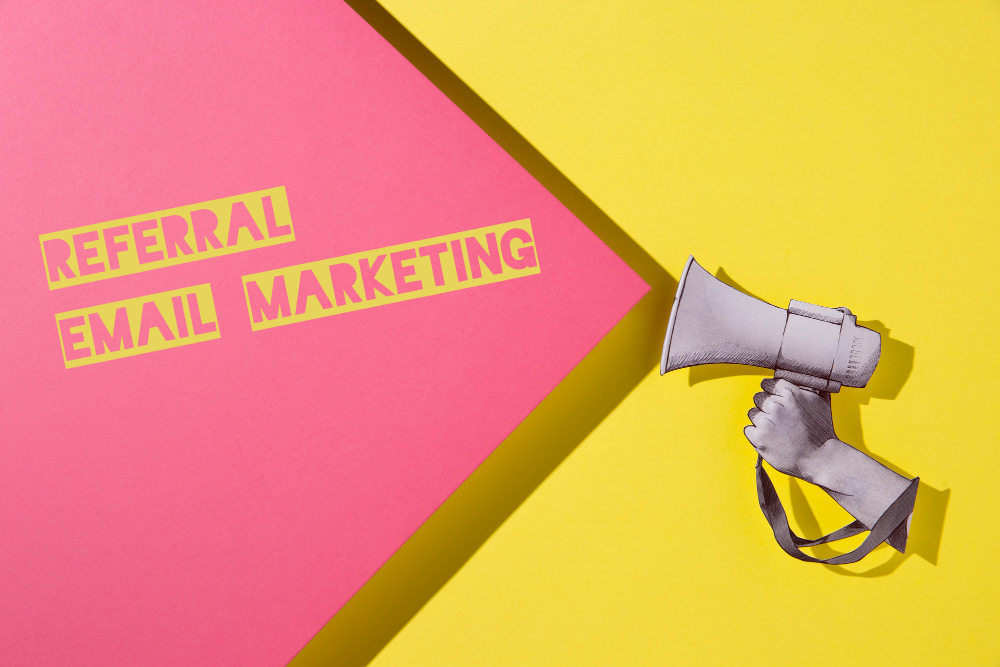
Have you ever recommended a product or service to a friend or family member? Well, that’s exactly what referral marketing is all about! When someone receives a recommendation from someone they trust, they’re more likely to try out that product or service themselves. Referral marketing is a powerful way for businesses to generate new leads and build their customer base. Plus, it can be very cost-effective compared to other marketing tactics. In this blog post, we’ll dive deeper into the world of referral email marketing and explore how to do referral email marketing to help you grow your business. So, let’s get started!
Why Referral Email Marketing?
It seems that many businesses are still missing out by not setting up referral marketing campaigns. It’s not that they undervalue referral marketing in general, but sometimes they don’t realize how effective they can be. As with any other campaign, setting up a successful referral program takes effort and strategy. It might involve creating clear and catchy messaging, ensuring your customers have an excellent experience, and even offering referral rewards. With the right approach, referral marketing can be a game changer for your business!
One thing to keep in mind with referral marketing is that it can be tricky to track and measure. It’s not always easy to know how many new customers are coming from referrals. But having the right tools or using channels that give you opportunities to track your efforts (such as email marketing) will help. So, how do you create a referral email campaign?
Step 1: Define Your Goals
Before diving into all the fun of creating your referral email campaign copy and design, it’s important to take the time to define your goals. What do you hope to accomplish (what are your success metrics)? Do you want to generate more leads, learn how your customers feel about your business or raise brand awareness? All of these factors are important to consider.
Take some time to plan whether you want to send just a one-time email or create an ongoing automated journey for your customers. Once you have a clear idea of your objectives and scope of work, you can begin to brainstorm your campaign around them. It might involve creating data extensions or separate integrated email lists to target just the customer base you want, collaborating with other team members to develop ideas, and finding ways to attribute the newly generated customers to your campaign reporting.
Step 2: Identify Your Target Audience
Now, it’s time to focus on identifying your target audience! Who are the customers that are most likely to refer new business to you? Is it your loyal and repeat customer base, or are you looking to target newly acquired customers? By understanding your ideal customer for the referral campaign, you can tailor your data segments (and later on copy and design) to maximize its impact.
So, when you have identified whom you want to target, it’s time to check up on your customer data state. Ensure you have the right data attributes in your ESP/CRM to build those segments. Consider the values you want to sync back to your CRM if that’s desired. Do your due diligence: check if you have all required values, if they are up to date, if you need any additional data fields created and synced, if you have the correct data for any personalization opportunities, etc.

Step 3: Incentives – Yay or Nay?
Let’s talk about incentives! Incentives are great for motivating your customers to refer new business to you. You have a variety of options to choose from, including discounts, free products or services, or even cash rewards. As you know your target audience, picking the right ones for your mailing list will be easier.
However, remember that your choice of incentives will also depend on your budget and ability to distribute them to your customers. Also, certain industries may have regulations that prevent the use of incentives in marketing efforts. If you decide not to use incentives, that’s OK – referral marketing can still work without them.
Step 4: Craft Your Message
The next step is to craft your message – this is where you get to show off your creativity! When building your email copy, images, and template, ensure they’re easy to read/understand and are catchy and compelling. Have one main call-to-action (CTA) – your goal is to get as many referrals as possible. Don’t start adding irrelevant content, as you may see a decrease in actions on your referral CTA. Make it clear what action you want your audience to take, whether referring someone directly, sharing a link to your website, or signing up for a referral program.
You want to be positive but persuasive and highlight the benefits of referring new business to you. Focus on building trust and rapport with your audience. Make it clear that you value their opinions and, of course, referrals. Let them know that you’re committed to providing top-notch service and experiences to them and anyone they refer to your business. Make sure that your email is mobile-friendly: check how it renders across multiple devices – is your message clear on mobiles and desktops?
Step 5: Send Once or Build Your Automations
If you plan to send a single campaign, set aside time for testing and double-check your email lists and templates to ensure everything looks good. For those creating an automated referral program, it’s equally important to spend some time planning it out. Will you be testing different versions of your emails? You might also want to consider using some of the advanced AI features, such as send-time optimization, conversion likeliness, or frequency control.
Again, testing is key! You’ll want to ensure your journey works smoothly, including any splits or exclusions you might have set up. Once everything looks good, you’re ready to launch your referral program and start generating new leads for your business!
Step 6: Monitor Your Results
Last but not least, don’t forget to monitor your results! Monitoring and analyzing your campaign’s performance will help you understand what’s working and what’s not. Keep track of your key metrics and any new business generated so that you can make informed decisions about any necessary changes or optimizations.
By analyzing your results, you’ll gain valuable insights that will help you refine your message and incentives for your existing referral journeys and future campaigns. To be successful, it’s important to continue to improve your referral program over time.

Referral Email Marketing: You Won’t Know Till You Try
Great job! By following these steps, you’re on your way to creating a referral email campaign to help your business grow. Don’t forget to define your goals, choose the right incentives for your well-segmented target audience, and craft a compelling message highlighting the benefits of referring new business to you. Keep an eye on your results and make any necessary adjustments to improve your campaign’s performance. We love that email marketing allows you to test, refine, and optimize your campaigns to get the best results possible! So, don’t hesitate any longer – start planning your campaign today and take your business to the next level!